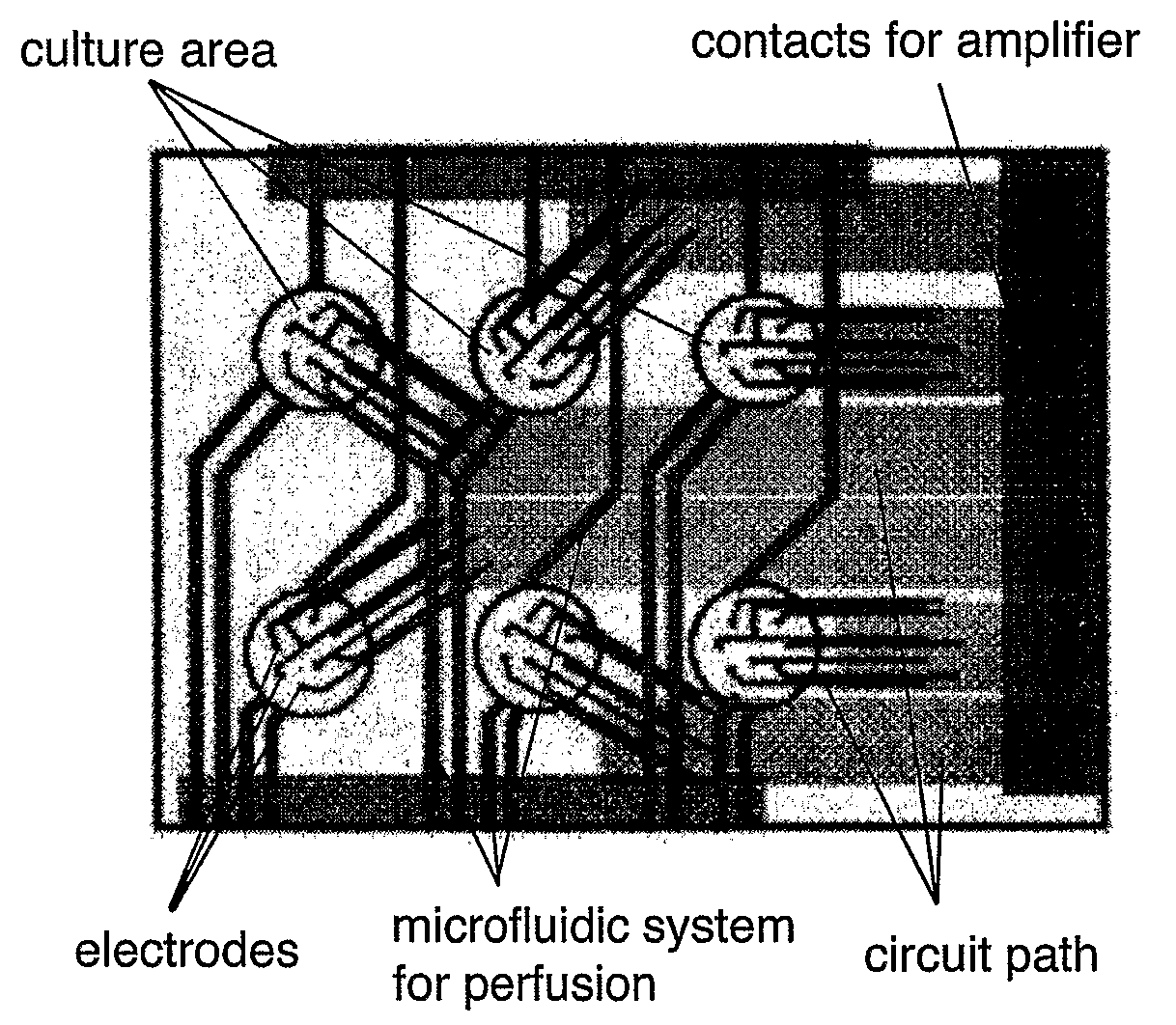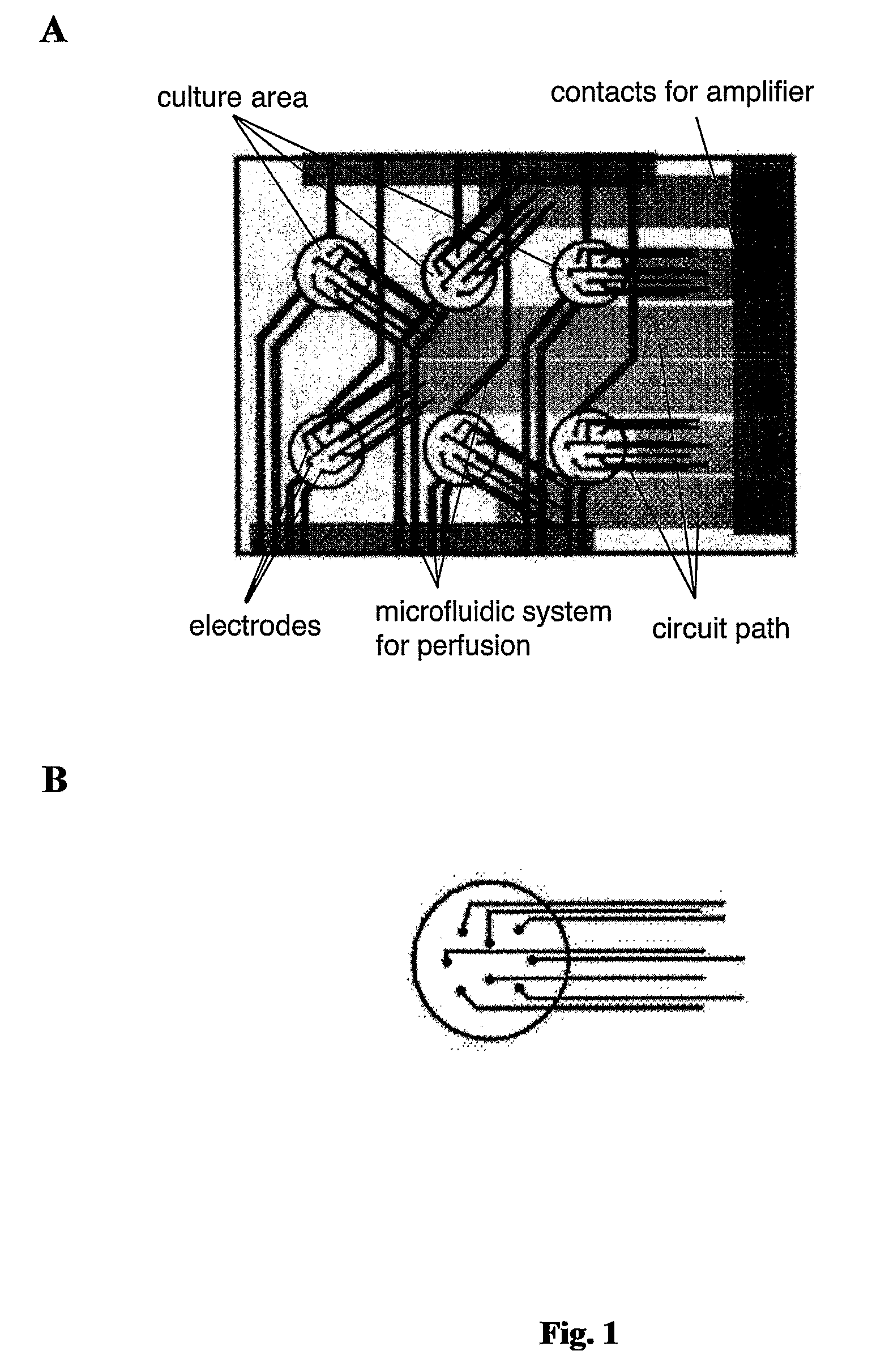Non-Invasive, In Vitro Functional Tissue Assay Systems
a functional tissue and in vitro technology, applied in biochemistry equipment, chemical libraries, combinational chemistry, etc., can solve the problems of toxicological screening assays that do not detect all toxicities associated with human therapy or exposure to chemicals in the environment, and the cost of preclinical toxicity testing alone is some hundreds of thousands of dollars
- Summary
- Abstract
- Description
- Claims
- Application Information
AI Technical Summary
Benefits of technology
Problems solved by technology
Method used
Image
Examples
example 1
Differentiation Protocol for ES Cells for the Preparation of Ventricular Cardiomyocytes and MEA Recording
[0214]For differentiation of ES cells into ventricular cardiomyocytes ES cells of cell line R1 (see supra and, e.g., Nagy et al., Proc. Natl. Acad. Sci. 90 (1993), 8424-8428) were cultured on 10 cm Petri dishes in Dulbecco's-modified Eagle's medium (DMEM) supplemented with 15% fetal calf serum (FCS) and leukemia inhibitory factor (LIF) on a layer of feeder cells (irradiated mouse embryonic fibroblasts). Cells were incubated at 37° C., 7% CO2 and 95% humidity.[0215]Day 0: Cells were trypsinized to a single cell suspension and collected by centrifugation. Cells were resuspended to a density of approximately 2×106 cells per ml in Knock-Out (KO) medium supplemented with 15% serum replacement (SR). 4 ml per 6 cm Petri dish of this suspension were incubated on a rocking table at 50 rpm, 37° C., 5% CO2 and 95% humidity for the following day;[0216]Day 1: Dilution of the ES cell aggregate...
example 2
Extracellular Recording of Field Action Potentials (fAP) of Purified Cardiomyocytes
[0223]In accordance with the methods described in international applications WO2004 / 113515 and WO2005 / 005621 incorporating the disclosure of international applications WO02 / 051987 and WO99 / 01552 EGFP-positive atrial and pacemaker-like cardiac cells can be derived from stem cells which have been genetically engineered with a recombinant GFP gene under the control of selective promoters and carrying the puromycin resistance gene; see, e.g., Kolossov et al., FASEB J. 19 (2005), 577-579. After mass culture as, for example, described in international application WO2005 / 005621, comprising ten 12×12 cm2 culture dishes with approximately 4000 EBs / 20 ml and medium exchange (IMDM+20% FCS) every second or third day, respectively, through cell screens with nylon membrane, and selection with puromycin for 9-14 days the resultant EBs are transferred into 50 ml tubes and washed twice with PBS. After treatment with t...
PUM
 Login to View More
Login to View More Abstract
Description
Claims
Application Information
 Login to View More
Login to View More - Generate Ideas
- Intellectual Property
- Life Sciences
- Materials
- Tech Scout
- Unparalleled Data Quality
- Higher Quality Content
- 60% Fewer Hallucinations
Browse by: Latest US Patents, China's latest patents, Technical Efficacy Thesaurus, Application Domain, Technology Topic, Popular Technical Reports.
© 2025 PatSnap. All rights reserved.Legal|Privacy policy|Modern Slavery Act Transparency Statement|Sitemap|About US| Contact US: help@patsnap.com


